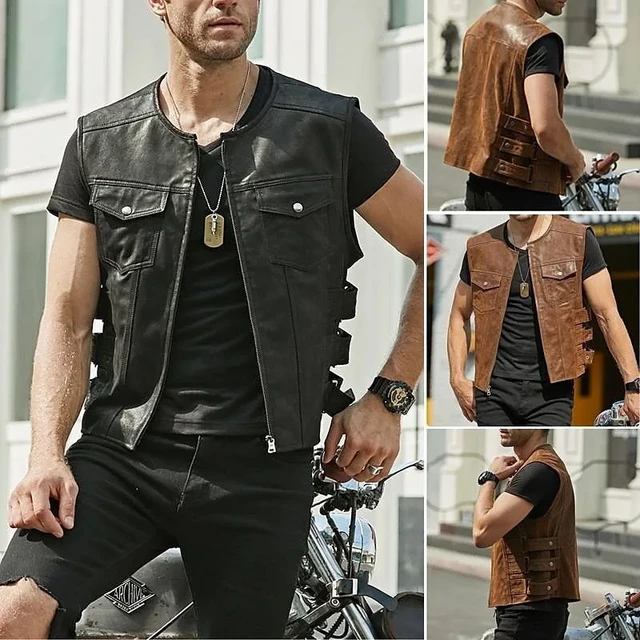Introduction
Custom motorcycle vests are a popular choice among riders who want to express their individuality and style while enjoying the open road. When it comes to creating a personalized vest, it’s important to consider the material used. The selection of the right material can impact not only the overall aesthetics but also the functionality and durability of the vest. In this guide, we will explore different materials available for custom motorcycle vests. From classic leather to alternative options, we will discuss the features, benefits, and considerations of each material to help riders make informed choices for their personalized vests.
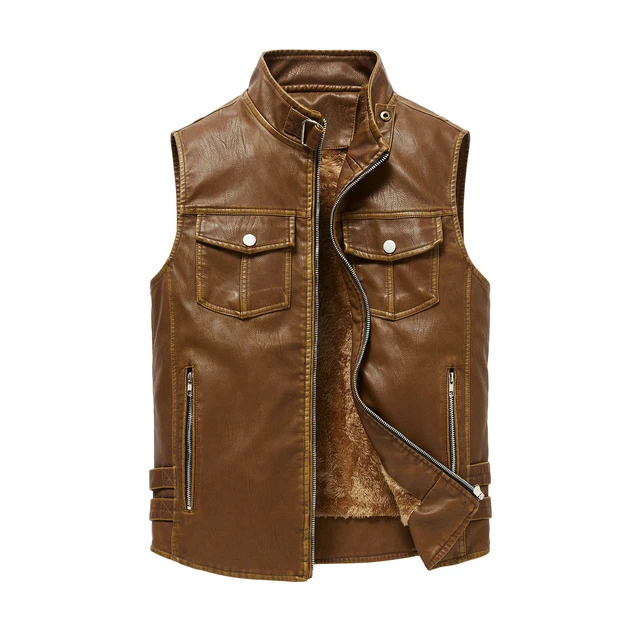
Are there different materials available for custom motorcycle vests?
Leather: A Classic Choice
1.1. Timeless Appeal
Leather is synonymous with the world of motorcycles. It has a long-standing reputation for being a durable, stylish, and iconic material. Leather vests offer a classic and rugged look that many riders prefer.
1.2. Durability and Abrasion Resistance
Leather is highly durable and offers excellent abrasion resistance, making it ideal for motorcycle vests. It can withstand the rigors of riding and provide protection against scrapes and abrasions in the event of an accident or fall.
1.3. Natural Insulation
Leather provides natural insulation, keeping the rider warm during colder rides. It offers protection against wind chill and helps maintain body heat.
1.4. Maintenance and Care
Leather requires regular maintenance and care to retain its quality. It should be cleaned with specialized leather cleaners and conditioned to keep it soft, supple, and resistant to drying or cracking.
Textile: Versatile and Functional
2.1. Lightweight and Breathable
Textile materials such as nylon or polyester offer lightweight and breathable options for motorcycle vests. They allow air circulation, making them suitable for riding in warmer climates.
2.2. Moisture-Wicking
Textile vests often feature moisture-wicking properties, which help to draw sweat away from the body, keeping the rider cool and dry during extended rides or in humid conditions.
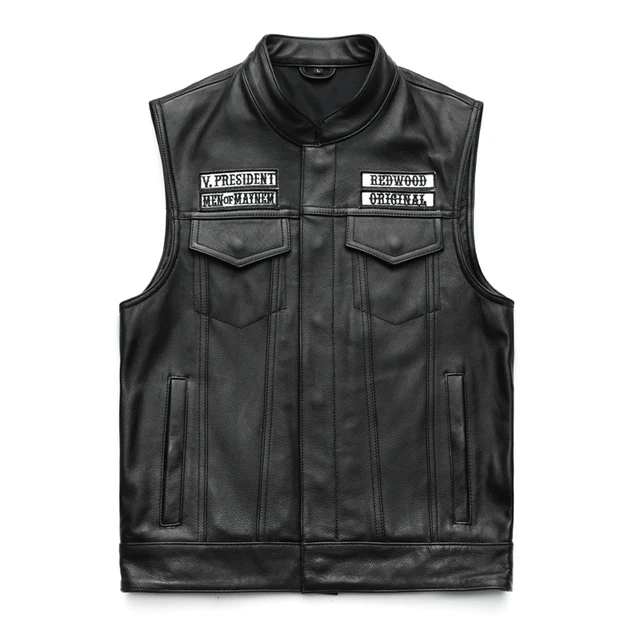
2.3. Flexibility and Comfort
Textile materials offer more flexibility and freedom of movement compared to leather. Riders who prefer a greater range of motion may find textile vests more comfortable for long rides or active riding styles.
2.4. Weather Resistance
Textile vests can be treated with water-resistant or waterproof coatings, providing protection against light rain or drizzles. They can also feature removable or adjustable liners to adapt to changing weather conditions.
Denim: Casual and Stylish
3.1. Casual Look
Denim vests offer a more casual and laid-back style, popular among riders who prefer a relaxed and fashionable appearance on their motorcycles.
3.2. Lightweight and Breathable
Denim is a lightweight and breathable fabric, making it suitable for comfortable rides in warmer weather. It allows air circulation and helps regulate body temperature.
3.3. Customization and Personalization
Denim vests provide ample opportunities for customization and personalization. Riders can easily add patches, embroidery, or other decorative elements to showcase their individuality and interests.
3.4. Limited Protection
While denim offers some protection from the wind and minor abrasions, it does not offer the same level of durability or impact resistance as leather or specialized textile materials. Riders should consider additional layers or armor for enhanced protection.
Mesh: Enhanced Ventilation
4.1. Maximum Ventilation
Mesh vests are designed for optimal airflow and ventilation, making them ideal for riding in hot and humid climates. The open-weave construction allows air to pass through, keeping the rider cool and comfortable.
4.2. Lightweight and Flexible
Mesh vests are typically lightweight and flexible, offering a comfortable fit and freedom of movement. They are often preferred by riders who prioritize breathability and flexibility.
4.3. Limited Protection
Mesh vests are primarily focused on ventilation and may offer limited protection against abrasions or impacts. Riders should consider wearing additional layers or armor underneath the mesh vest for added safety.
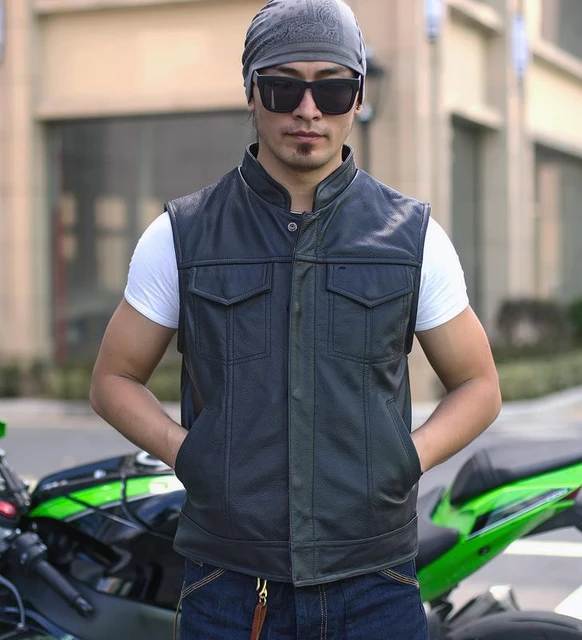
Hybrid Options: Combining Materials
5.1. Leather and Textile Combination
Some custom motorcycle vests feature a combination of leather and textile materials. This hybrid design offers the best of both worlds, with the durability and style of leather combined with the flexibility and functionality of textiles.
5.2. Leather and Mesh Combination
For riders seeking a balance between breathability and protection, leather and mesh combinations can provide the desired features. Leather panels in critical areas offer abrasion resistance, while mesh panels provide ventilation and airflow.
Reflective Materials: Enhanced Visibility
6.1. Safety Enhancement
Custom motorcycle vests can incorporate reflective materials or panels to increase visibility in low-light conditions or at night. Reflective elements can significantly improve the rider’s visibility to other motorists, enhancing overall safety.
6.2. Placement Considerations
When incorporating reflective materials, it is essential to consider their placement strategically. Reflective panels should be positioned to maximize their visibility from various angles, ensuring that the rider is easily seen by others on the road.
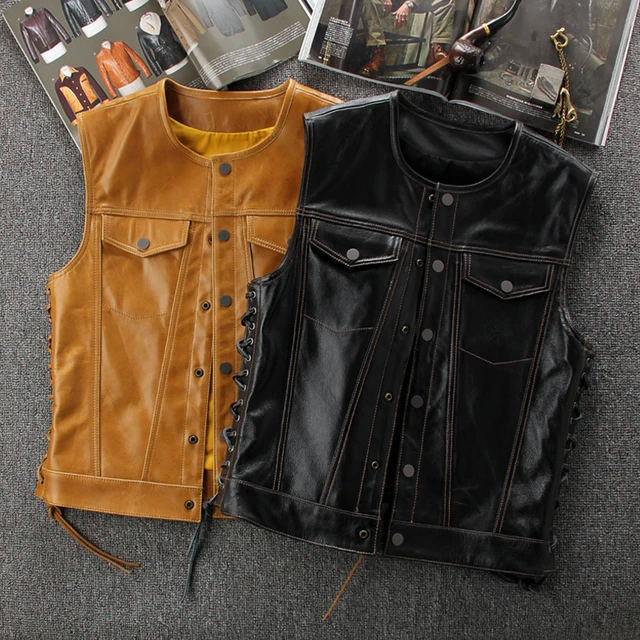
Finding the Right Balance
7.1. Style and Functionality
When selecting a material for a custom motorcycle vest, it is important to strike a balance between style and functionality. Consider the desired aesthetics, level of protection, and comfort requirements to find the material that best suits personal preferences and riding needs.
7.2. Weather and Riding Conditions
Factor in the typical weather and riding conditions in which the vest will be worn. Choose a material that offers appropriate insulation, breathability, or weather resistance based on the rider’s specific riding environment.
7.3. Personal Preference and Maintenance
Consider personal preferences, such as the desired look and feel of the vest, as well as the level of maintenance and care required. Some materials may require more attention and upkeep than others, so choose a material that aligns with lifestyle and maintenance preferences.
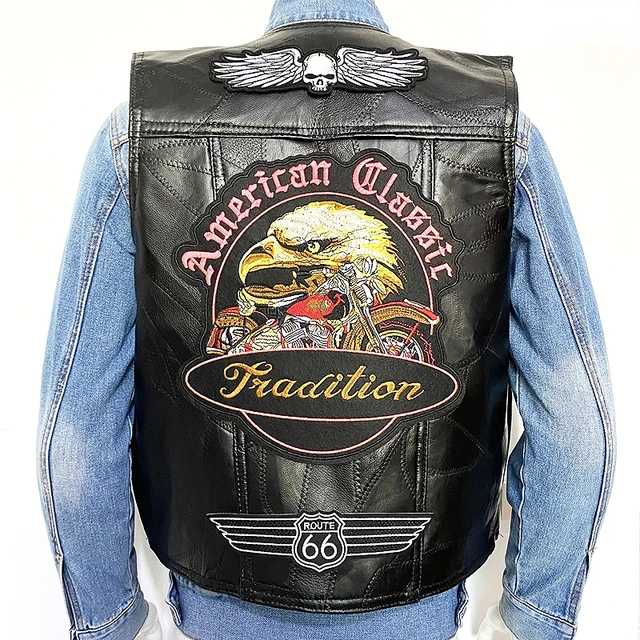
Conclusion
Custom motorcycle vests offer riders the opportunity to showcase their unique style while enjoying the freedom of the open road. Selecting the right material for a custom vest is crucial in achieving the desired combination of aesthetics, functionality, and durability. Leather provides a classic and rugged look with superior abrasion resistance, while textiles offer versatility, breathability, and lightweight options. Denim offers a casual and fashionable appearance, and mesh enhances ventilation in hot climates. Hybrid options combine materials for a balance of features, and reflective materials enhance visibility for added safety. Riders should prioritize personal preferences, riding conditions, and maintenance considerations when choosing the material for their custom motorcycle vests. By selecting the ideal material, riders can enjoy the perfect blend of style, comfort, and protection on their motorcycle journeys.

